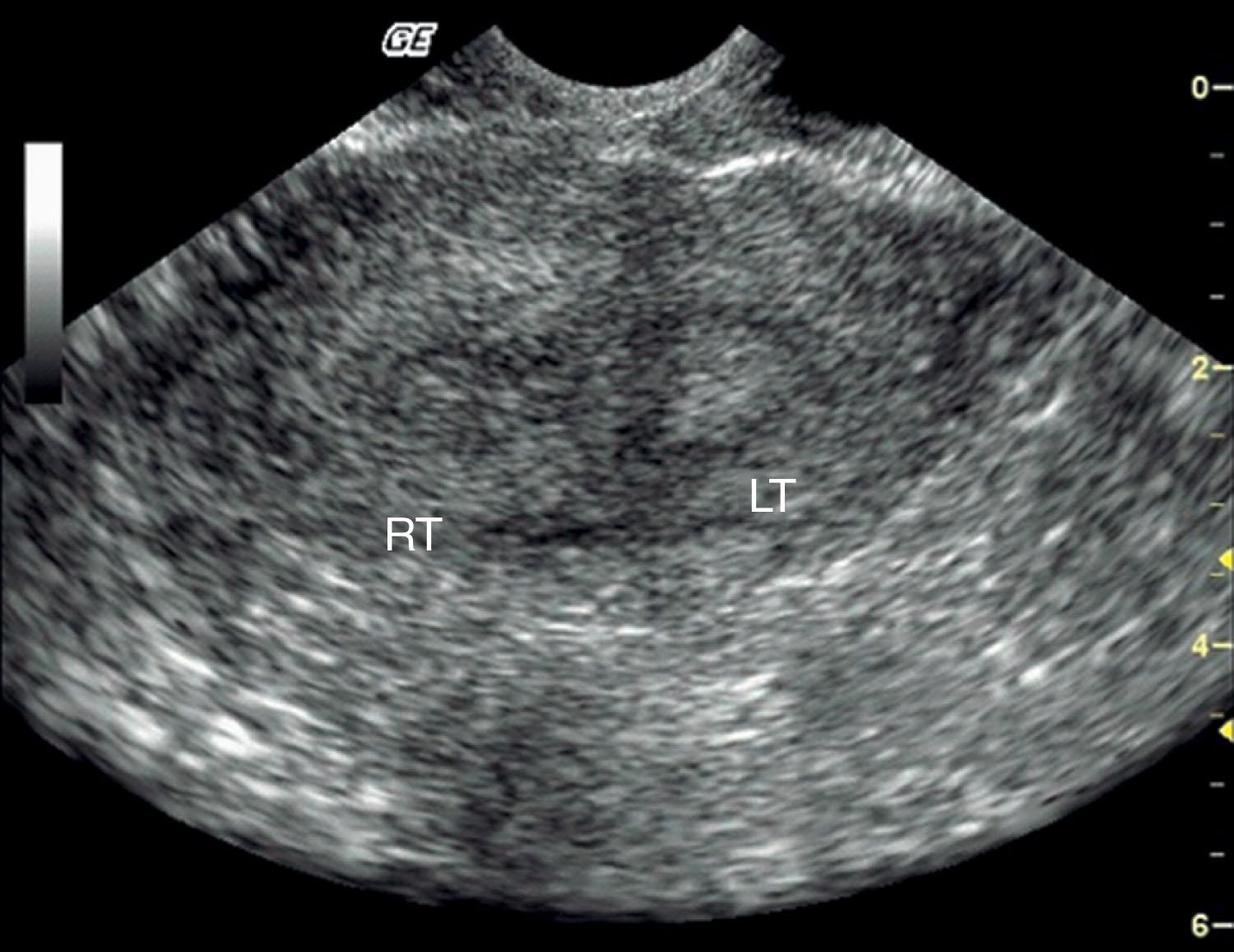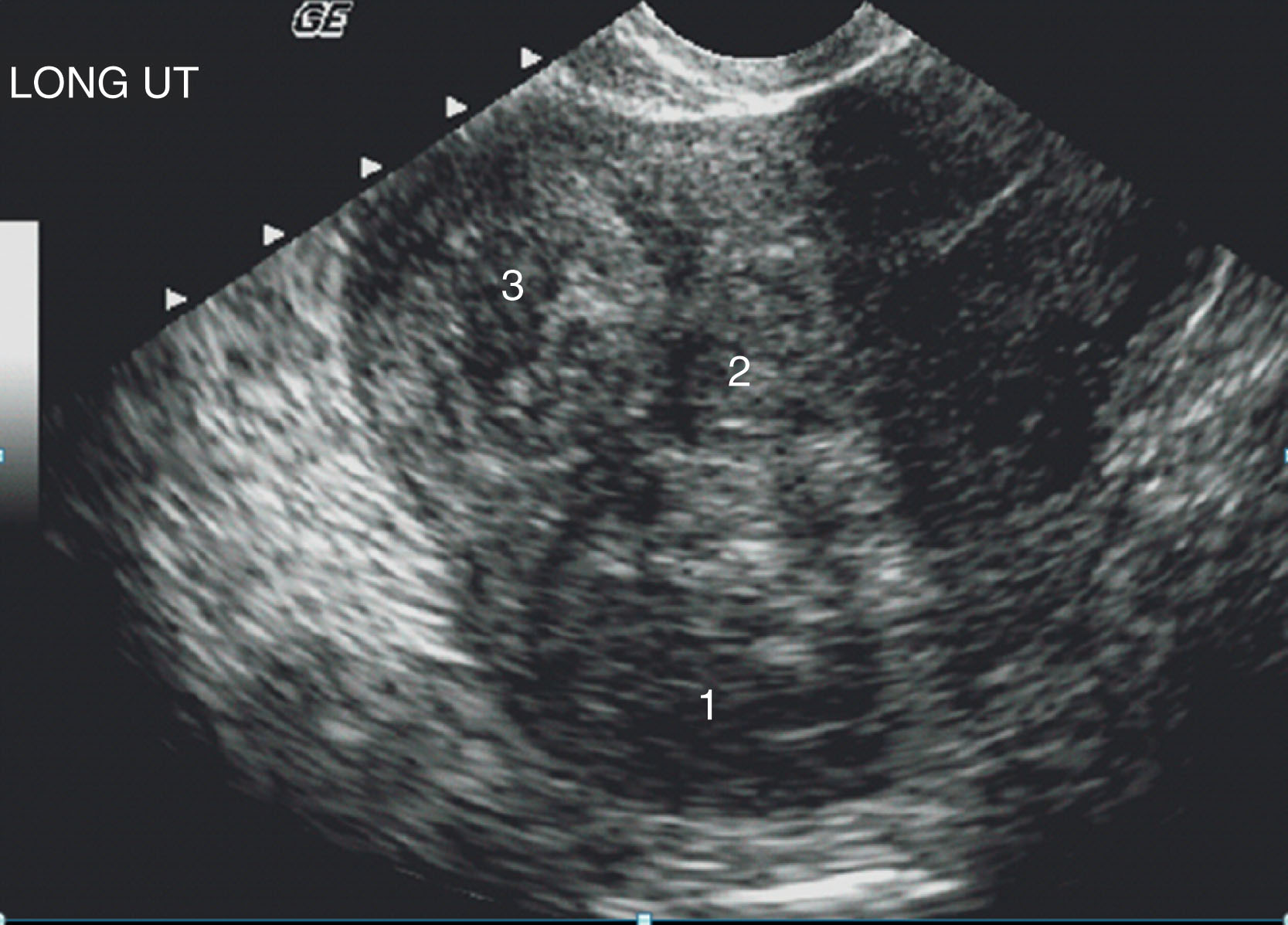Physical Address
304 North Cardinal St.
Dorchester Center, MA 02124
On completion of this chapter, you should be able to:
Define infertility and list its treatment options
List the female pelvic organs to be imaged in an infertility workup
State anatomic variations or pathologies that need to be defined when imaging an infertility patient
List complications that may occur because of infertility treatments
Ultrasound has come to play an important role in the management and guidance of treatment for the infertile patient. By definition, infertility is the inability to conceive within 12 months with regular coitus (or within 6 months for those 35 years or older). , It is estimated that infertility affects 1 in 7 couples in America. Approximately 30% of infertility cases are attributable to the male or female alone, and the remaining 40% are combined male/female or unexplained factors. Infertility can be grouped into cervical, endometrial/uterine, tubal, ovulatory, peritoneal, and male factor causes. Male factor causes of infertility are an inadequate number of motile sperm (5th percentile, 10 million) and decreased motility of sperm, obstruction of the spermatic ducts or vas deferens, and scrotal varicoceles. This chapter focuses on female factors, including discussing cervical, uterine/endometrial, tubal, ovulatory, and peritoneal causes of infertility.
As reproductive technologies continue to advance, it is important for the sonographer to be aware of the different treatment plans and the role that ultrasound plays in evaluating the infertile patient because many of these patients will come to the ultrasound appointment very knowledgeable about their procedures. The sonographer should be compassionate toward each patient’s situation.
The role of the cervix in fertility is to provide a nonhostile environment to harbor sperm. The cervix does this with glands that secrete mucus and crypts that hold the sperm. Ultrasound can evaluate the cervical length during pregnancy to assess for cervical incompetence. However, in the nongravid uterus, both the length of and any opening in the cervix are difficult to assess. Hysterosalpingography (HSG) can be used to evaluate the internal os diameter. A diameter less than 1 mm by HSG may indicate cervical stenosis. Nabothian cysts within the cervix can appear demonstrable but rarely, if ever, play a role in subfertility . Subfertility is a condition in which pregnancy can be conceived without medical intervention but may take longer than average to achieve.
When evaluating the uterus of the infertility patient, the sonographer has two main objectives: (1) to assess the structural anatomy and (2) to assess the endometrium. Assessing for structural anatomy refers to evaluating the uterine shape (i.e., unicolis, bicornuate, congenital malformations) ( Fig. 46.1 ) and evaluating echogenicity. Is the uterus uniform in echogenicity? Are there any masses suggestive of submucosal fibroids that may impede implantation of the fertilized egg ( Fig. 46.2 )? When assessing the endometrium, the sonographer wants to evaluate the endometrial stripe thickness and echogenicity characteristics and any intracavitary lesions.


It is estimated that congenital uterine anomalies occur in 6.7% of women in the general fertile population. Congenital uterine anomalies result from defects in müllerian duct development, fusion, or resorption and are associated with renal anomalies except for arcuate or septate uteri. Although nine descriptive terms are used to describe uterine anomalies, this chapter discusses only those that ultrasound is best suited to evaluate. The congenital anomalies most easily assessed with ultrasound are a septate or bicornuate uterus and uterus didelphys. Although these three entities are difficult to accurately confirm with ultrasound, ultrasound is good at depicting the two endometrial interfaces in the transverse plane. This finding should alert the sonographer to further evaluate the pelvic anatomy for two versus one cervix and vagina. Didelphys or bicornuate uterus is associated with a higher rate of fertility complications such as fetal malposition, preterm labor/delivery, and miscarriage.
A uterine anomaly associated with a high incidence of infertility is the septate uterus. This congenital anomaly presents with two uterine cavities and a single fundus. In this case, the septum presumably causes a problem for implantation. If the pregnancy implants along the septum, the pregnancy may be at an increased risk of failure because of inadequate blood supply from the septum. For these patients, the septum can be removed hysteroscopically to improve implantation and fertility success (no nonrandomized trial published to date), so this is an important diagnosis to make and offer counseling on surgical management.
On ultrasound, the septate uterus appears as two endometrial cavities without a fundal notch compared with the bicornuate and didelphys uterus, which have two endometrial cavities, a wide uterine body, and a fundal notch (see Fig. 46.1 ). The septate uterus should not be confused with a uterine cavity filled with myomatous tumors, as shown in Fig. 46.2 .
The T-shaped uterus is another uterine anomaly to evaluate. This congenital anomaly is caused by exposure to diethylstilbestrol in utero. Diethylstilbestrol was a medication given to women to treat for threatened abortion from 1950 to 1970. The T-shaped uterus also is at risk for cervical incompetence, and there is no treatment known for this type of congenital anomaly. Because many uteruses imaged will not fit completely into one of these categories, the anatomy needs to be described as thoroughly as possible and may not be given a label immediately. Magnetic resonance imaging and HSG are other imaging methods that may be offered to better evaluate the wide range of uterine anomalies.
Three-dimensional ultrasound imaging allows the coronal plane to be viewed. The coronal plane has afforded a diagnostic opportunity that two-dimensional imaging was unable to obtain. Fig. 46.3 demonstrates the standard two-dimensional images of a septate uterus as well as the three-dimensional coronal plane. Note that in the coronal plane, the diagnosis of septate uterus becomes apparent. Three-dimensional ultrasound imaging can offer images of the uterine contour and the entire endometrial cavity that are on par with the diagnostic accuracy of magnetic resonance imaging to diagnose müllerian anomalies.

Become a Clinical Tree membership for Full access and enjoy Unlimited articles
If you are a member. Log in here